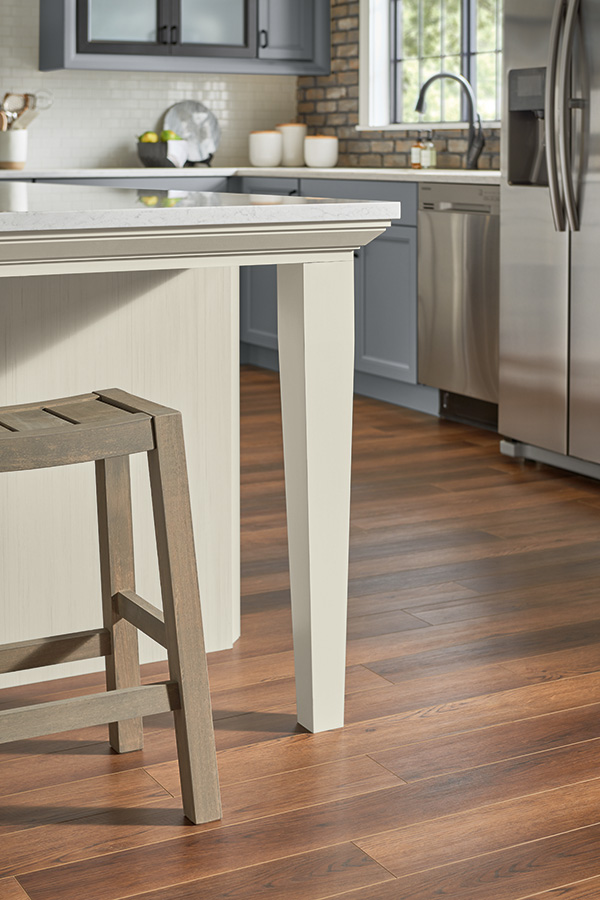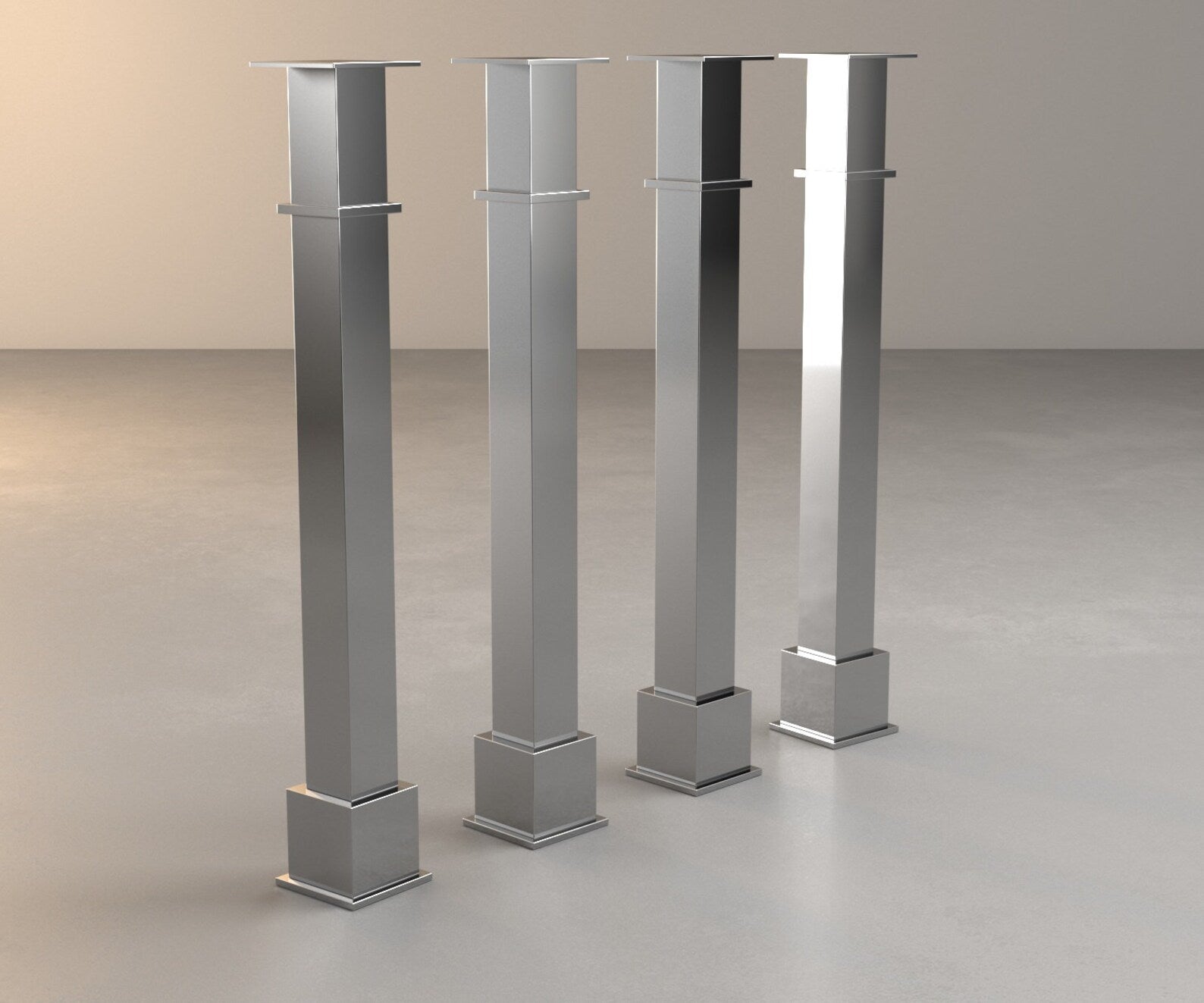Picking the Suitable Kitchen Island Leg for Longevity and Capability
Picking the Suitable Kitchen Island Leg for Longevity and Capability
Blog Article
Checking Out the Vital Features of a Cooking Area Island Leg for Your Culinary Room
The kitchen area island acts as a main hub in any cooking area, and the selection of leg layout is critical in enhancing both its capability and visual allure. Comprehending the vital features of cooking area island legs-- including product alternatives, style styles, and stability aspects-- can considerably influence the general experience within the kitchen. As we check out these elements, we will uncover just how thoughtful personalization and accessories can boost your kitchen island from a simple utility to a striking focal point. What specific considerations should be focused on to attain this equilibrium?
Value of Cooking Area Island Legs
Kitchen island legs play a critical role in both the performance and visual appeals of a kitchen area room. They not just sustain the weight of the island yet also improve the general layout, adding to the kitchen's visual appeal. The option of legs can dictate the style of the kitchen area, be it contemporary, standard, or rustic.
Functionally, durable and effectively designed legs guarantee stability, enabling the risk-free use the island for different jobs such as cooking, eating, or enjoyable. Strong legs protect against changing and tottering, giving a reliable surface for daily tasks.
In addition, the elevation and positioning of the legs can influence the comfort level for those seated at the island. A well-considered height can accommodate bar feceses or chairs, advertising an inviting atmosphere for events.
Along with these useful considerations, kitchen island legs can act as a focal factor in the area (kitchen island leg). Attractive or distinctively developed legs can raise the design visual, making the island a focal point. Therefore, choosing the right kitchen island legs is essential for stabilizing type and function in any kind of cooking area
Material Options for Legs
Picking the appropriate material for cooking area island legs significantly influences both longevity and layout. Typical material alternatives include rock, metal, and timber, each offering unique advantages.
Timber is a prominent choice as a result of its warmth and versatility. It can be conveniently personalized to match various decor designs, from rustic to contemporary. Woods like oak and maple provide superb stamina and longevity, while softer timbers can be more at risk to use and tear.
Steel legs are favored for their streamlined, modern visual. kitchen island leg. Stainless steel and light weight aluminum are not just robust yet also immune to corrosion and rust, making them suitable for kitchen area atmospheres. They can create an industrial appearance and are commonly available in various coatings to match other cooking area components
Stone legs, such as granite or marble, include a component of high-end and security. While heavier than other products, they supply phenomenal sturdiness and can hold up against significant weight. Nevertheless, they may require extra assistance to ensure proper balance.
Inevitably, the option of material need to line up with both functional needs and the general design vision of the cooking area area, ensuring that the island legs boost both utility and visual appeals.
Layout Styles to Take Into Consideration
What style styles should be considered when selecting legs for a kitchen island? The selection of leg style dramatically influences the total visual of your cooking space. For a modern kitchen, smooth and minimalistic leg styles, such as stainless-steel or geometric shapes, can boost the modern allure, offering a clean and minimalist look.
In comparison, conventional cooking areas benefit from traditional designs such as turned or carved wood legs, which include warmth and personality. These alternatives typically include intricate details that enhance classic furnishings. For a rustic atmosphere, take into consideration legs made from reclaimed wood or functioned iron, which bring a natural, natural quality to the area.
If you lean in the direction of a commercial theme, robust metal legs with a troubled coating may be perfect, supplying an edgy yet innovative touch. Additionally, farmhouse design kitchens can incorporate chunky legs that evoke a sense of strength and homeliness.

Elevation and Security Elements
The elevation and security of a kitchen Home Page area island are crucial aspects that straight influence its functionality and individual experience. An excellent kitchen area island leg must provide sufficient height to fit a selection of tasks, from food preparation to laid-back eating. Typically, kitchen area islands separate 36 to 42 inches high, aligning with typical counter and bar elevations. This range guarantees convenience for customers while executing various activities, therefore improving the total check out here use of the space.
Security is equally vital, especially as kitchen islands typically serve as focal points in cooking environments. The leg's add-on to the island's base should be secure, making certain durability and strength against the wear and tear of daily usage.
Customization and Devices
Customization alternatives and accessories for cooking area island legs can substantially enhance both the visual appeal and performance of the room. House owners can select from a range of products, including rock, metal, and timber, enabling seamless assimilation with existing kitchen style. The choice of surface-- be it an all-natural stain, paint, or powder coating-- additional individualizes the appearance, guaranteeing that the island enhances the total design style.
In enhancement to material and surface, home owners might also check out the unification of devices such as decorative brackets, flexible feet, or incorporated shelving. Braces can offer extra support while adding to a rustic or modern-day aesthetic. Adjustable feet are especially helpful for irregular floor covering, ensuring the island stays steady and degree, which is critical for both safety and security and usability.

Final Thought
In verdict, cooking area island legs offer an essential duty in giving security and improving the general aesthetic of the culinary space. Customization alternatives and devices can raise the kitchen area island, making it an unique focal point within the home.
The kitchen island offers as a main hub in any culinary room, and the selection of leg style is critical in enhancing both its functionality and aesthetic charm. Comprehending the essential functions of kitchen island legs-- consisting of product choices, design styles, and security aspects-- can considerably impact the check my site total experience within the kitchen area.Kitchen island legs play a crucial duty in both the performance and appearances of a cooking area space.What layout styles should be considered when picking legs for a kitchen area island?In conclusion, cooking area island legs serve a critical function in offering security and improving the total aesthetic of the cooking area.
Report this page